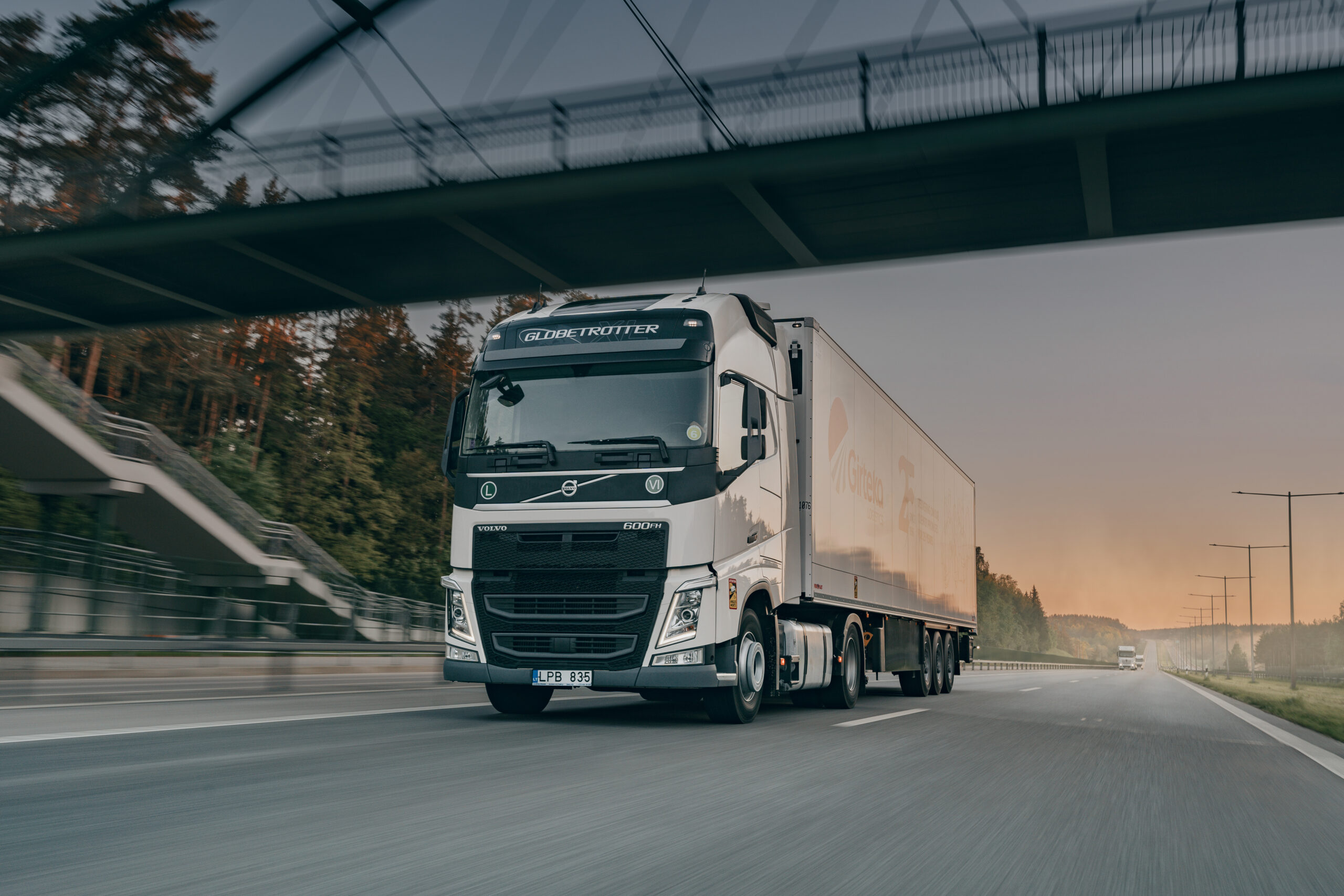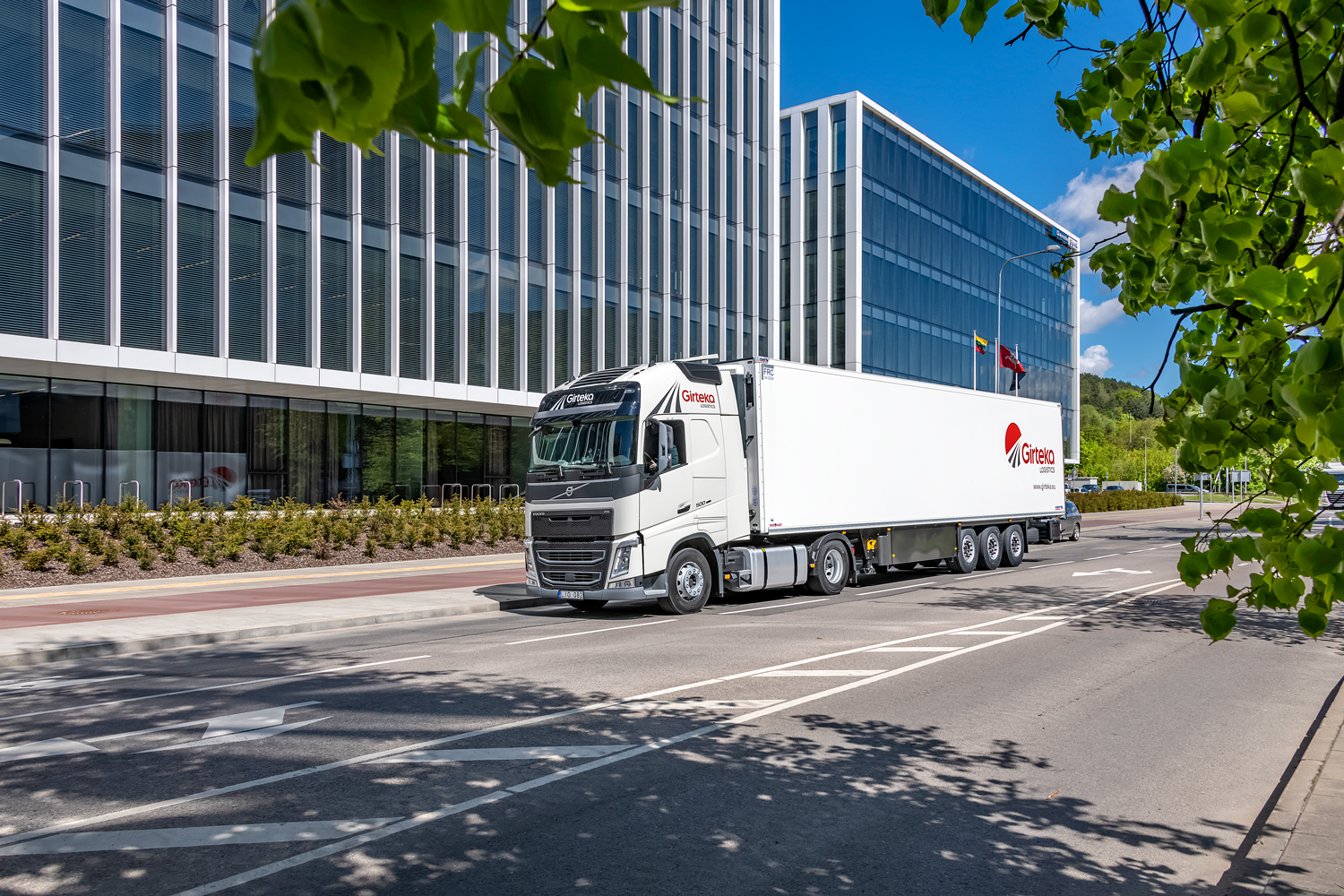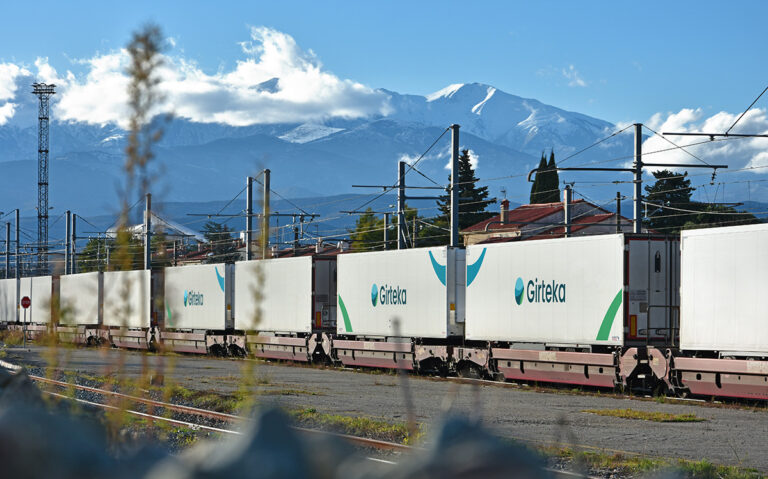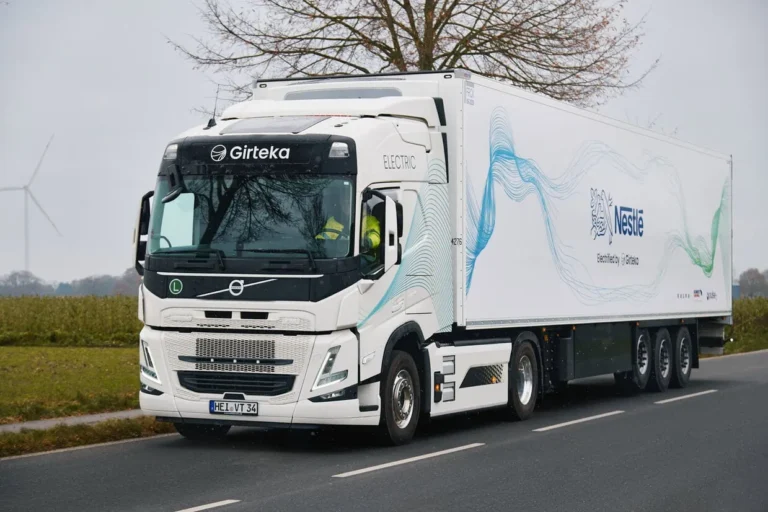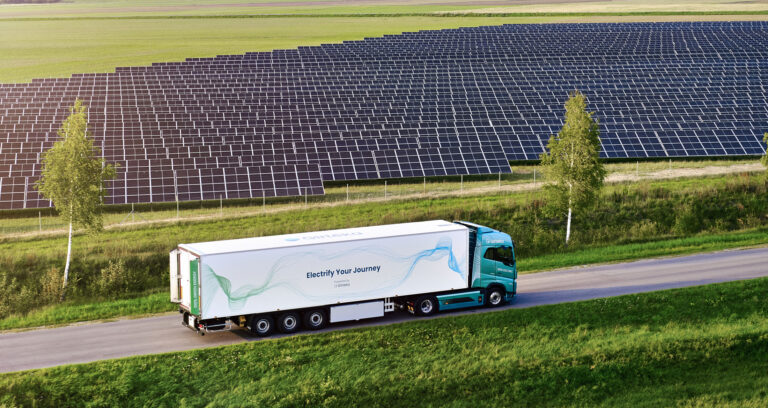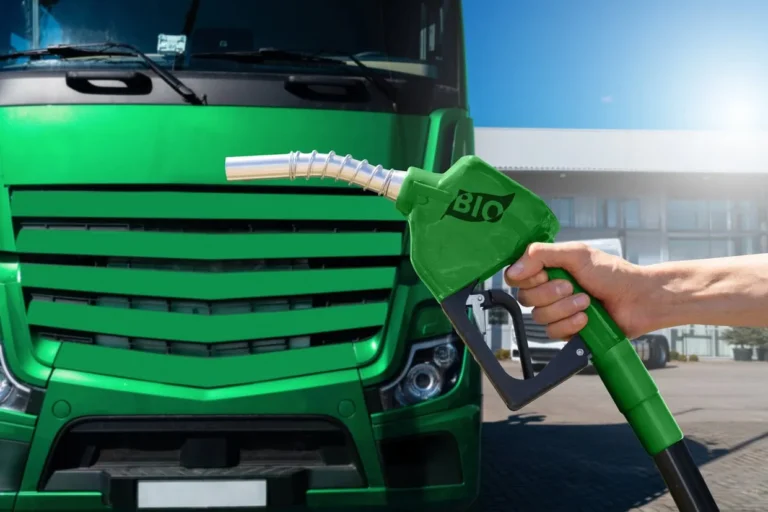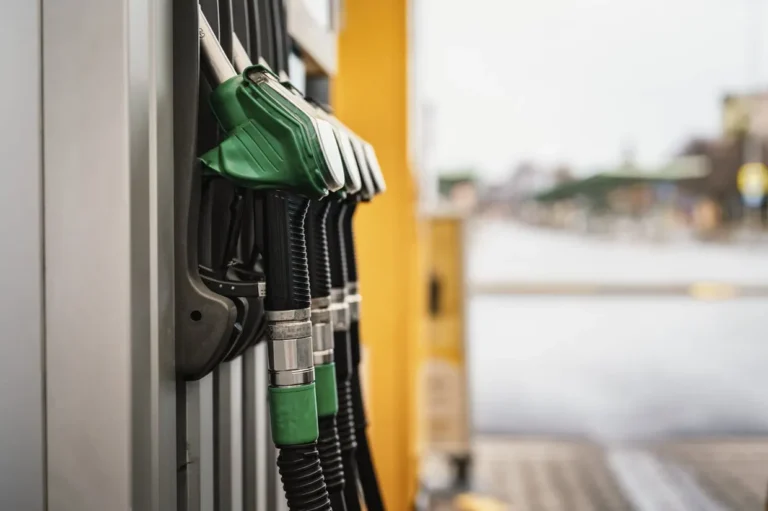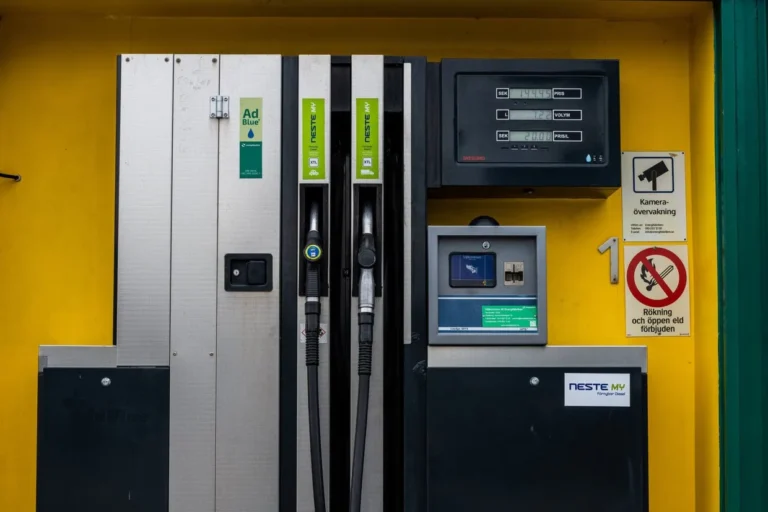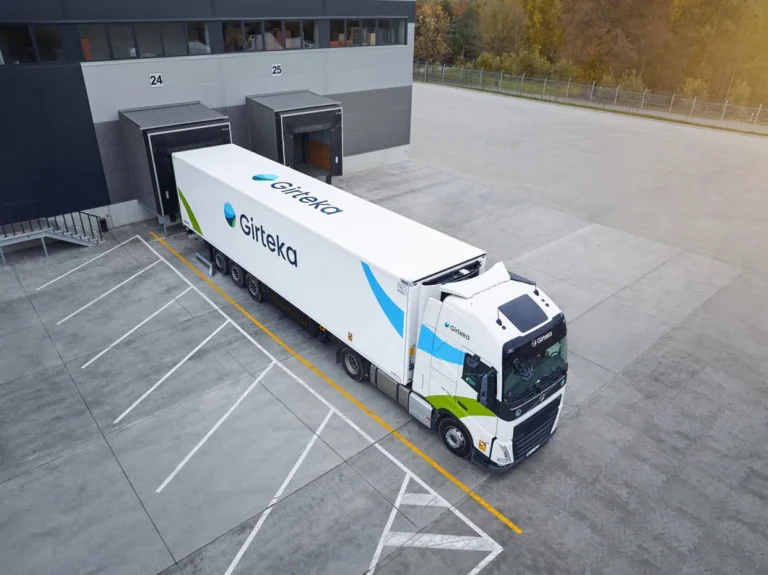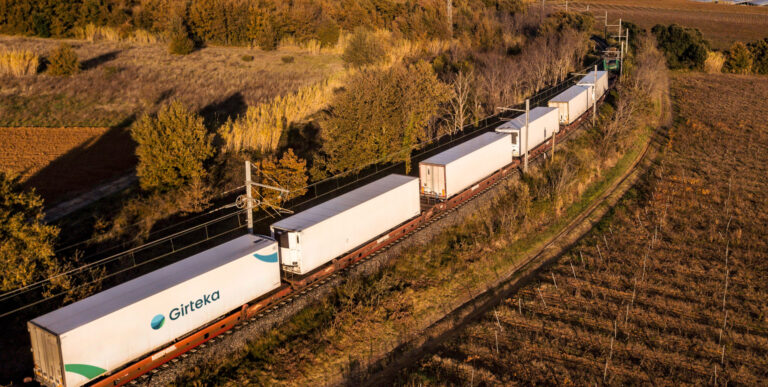This is part two about the challenges that road freight transport providers face when planning to switch to a fleet that is powered by renewable sources, find part one here: https://www.girteka.eu/the-challenges-of-electrifying-a-fleet-of-heavy-duty-trucks/
Finding solutions to reduce the emissions of the transport industry is not a novelty project that could potentially yield great results later down the line. In fact, it is a project that, in terms of the bigger picture, is a must for manufacturers, shippers, and carriers alike. While electrifying a fleet of trucks has big challenges to overcome, hydrogen promises to bring out solutions that electric-powered trucks are unable to provide right out the gate, providing not only hope but a foundation upon which to build the future of road transport.
The problem with hydrogen, however, is actually arriving at the gate. The technology promises a more seamless transition, especially as refueling times are much more similar than those of battery-equipped vehicles, as well as the potential range of fuel cell vehicles (FCV) is very similar, if not more when compared to internal combustion engine (ICE)-based trucks.
Knocking out of the park
Compared to electric vehicles, hydrogen-powered trucks could have major advantages in terms of general usability to carry consumer and business’ goods across borders.
For example, the Mercedes-Benz GenH2 Truck, which the company began testing in May 2021, promises to have a range of up to 1,000 kilometers. The manufacturer is running the truck through its paces with a payload of 25 tons, with a total gross vehicle weight of about 40 tons, adhering to European Union (EU) laws, which is very similar to the specifications of a typical diesel-powered long-haul truck. However, when Daimler (the parent company of Mercedes-Benz) presented the GenH2 in September 2020, the company also revealed the eActros LongHaul, the long-range version of the eActros, an electric truck that is more suited to an urban environment. The manufacturer indicated that the LongHaul, which it described as being “in the same vehicle class as the GenH2 truck” will boast a range of approximately 500 kilometers, without any indication in terms of the potential payload the electric truck would be able to carry.
Even if the manufacturer argues that “comparatively short range of the eActros LongHaul on one battery charge is offset by its high energy efficiency” and that “many of the long-haul applications in the practical operations of transport companies do not require a range greater than the approximately 500 kilometers,” it is still fairly obvious that the GenH2 truck will be more efficient in terms of its operational flexibility, not only by being able to drive for longer periods but also refuel faster. The Germany-based company reiterated the same point as well, describing the eActros LongHaul as “the right choice for transport companies for regular use on plannable routes and with the appropriate distances and charging possibilities.”
It is fairly obvious that the potential of hydrogen-powered is much higher when compared to electric-powered vehicles. Furthermore, even if a battery-powered truck could match the range of hydrogen or diesel-powered one, the question is whether the payload would suffer, as typically, electric batteries are much heavier than diesel and hydrogen powertrains. Mercedes-Benz pointed out that the GenH2 truck will be powered by a 70 kWh battery, in addition to two hydrogen fuel tanks that could fit up to 80 kilograms (40 kg each) of the fuel. The regular eActros (short-haul version, slated for production in Fall of 2021) has a maximum gross vehicle weight of 25 tons, as its 420 kWh battery pack will power the truck for up to 400 kilometers of range, with a maximum payload of 17.7 tonnes on the 6×2 layout of the vehicle.
Back to reality
However, the future is not all rosy for hydrogen-powered heavy-duty trucks. Despite the added weight and additional time it takes to charge the battery, the economies of scale hugely favor any potential electric trucks, as more often than not, truck manufacturers are not exclusively truck manufacturers and have also developed their versions of electric passenger vehicles.
For hydrogen, the story could not be the same. The scale of manufacturing in terms of available car models is very limited, with nine models that are now out of production, and two that are still currently built, namely the Toyota Mirai and the Hyundai Nexo. The latter manufacturer has also begun producing the Hyundai Xcient Fuel Cell, the first fuel cell truck that is currently available on the road. The truck, which is able to travel up to 400 kilometers on a single charge, with a 73.2 kWh battery supplementing fuel tank able to store up to 34.5-kilograms of hydrogen, was first delivered to Switzerland. Hyundai plans to operate at least 1,000 of its Xcient zero-emission vehicles by 2025.
Picking out Switzerland was perhaps an unsurprising decision – the country is one of the few countries within Europe to have established at least several hydrogen-refilling stations. Its neighbors, including Germany, France, Austria, and Italy, also have places where to refuel such trucks. However, per h3.live data, except Riga, Latvia, the capital of Austria, Vienna, has the eastern-most hydrogen refilling station within continental Europe (barring Sweden and Norway). Of the 124 hydrogen stations that are currently in operation, the majority (92) of them are present in Germany. Another source that has mapped hydrogen refueling stations in Europe is h3-ap.eu. Coordinated by the Fuel Cells and Hydrogen Joint Undertaking (FCH JU), a pubic and private venture to overlook research, technical development and demonstration (RTD) activities with hydrogen, showcases a total of 135 filling stations with Germany having the majority of them (93).
As a result, long-haul operations with a fuel cell truck would hardly be possible. Simply put, there is no widely-developed network to refill at a place of convenience. In France, the three currently available hydrogen stations are situated in or around Paris, while in Switzerland, those stations are mostly concentrated on the north and north-west of the country.
It is a very similar situation to that of electric trucks. For Girteka Logistics, with a very wide network of potential destinations for its customers, spanning from Europe to Middle Asia, and everywhere between, there is a very clear gap in hydrogen availability, similarly to the situation as seen by the current infrastructure capacity with electric vehicles.
Infrastructure challenges
Limiting the potential range and area that hydrogen trucks are able to operate complicates the adaptation of such vehicles, especially considering the complexity of building up that infrastructure. Unlike electric vehicle charging stations, which seemingly are more easily integrated into the current infrastructure, refueling trucks with the gas is much more complicated.
When Tesla was building up its Supercharger network across the United States in the early-to-mid-2010s, the cost that the company bore to build a site of its charging station was between $100,000 and $175,000, according to TechCrunch. Comparatively speaking, as California, the United States, looks to install 111 new hydrogen fueling stations across the state, the median capital cost of one station is around $1.9 million, according to a program record issued by the United States Department of Energy (DoE) in February 2021. The price can go as high as $4.2 million if hydrogen is delivered by utilizing liquid hydrogen tankers (LHT), compared to gaseous tube trailers (GTT), which the DoE estimates sets the total capital cost of a station at $1.4 million. However, by using GTTs, the daily fueling capacity drops by almost 50%. At the same time, “the normalized cost of stations per dispenser has decreased between 77%–88% since 2012, likely due to the increase in station daily fueling capacity, along with reductions in fueling components cost (economies of scale),” concluded the DoE’s paper.
Charging stations are just the cherry on top. Producing and delivering that hydrogen is a challenge on its own, as it is not a material that can be found on the surface, or deep, on planet earth. Currently, the process to manufacture hydrogen can be harsh on the environment, possibly even eliminating the benefit of utilizing such a vehicle to reduce your greenhouse gasses. In the European Union (EU), “a noteworthy 96% – is made from natural gas, emitting significant amounts of CO2 emissions in the process,” indicated a report by the European Commission (EC). Per the Commission, the first challenge behind the move to hydrogen is to decarbonize the production of the fuel.
Currently, since hydrogen is also used in other processes, the material is described as either grey, blue, or green. Grey hydrogen is sourced from natural gasses, which are fossil fuels, while blue hydrogen is made from natural gas, yet its emissions are captured and stored underground. Green hydrogen is exactly what the name suggests – it is produced via an electrolyzer powered by renewable electricity sources, a process that is akin to that powering current hydrogen cars.
Direct and well-to-wheel hydrogen emissions
While multiple studies have proven that Battery Electric Vehicles (BEV) are much more environmentally friendly compared to their ICE counterparts, with the gap set to grow going forward as more electricity will be derived from emissions-free sources, Fuel Cell Electric Vehicles (FCEV) can hardly boast about the fact.
At the end of the day, the largest reason behind the switch to either BEVs or FCEVs is to reduce the overall emissions, whether it would be direct (while driving), or well-to-wheel emissions (extracting and producing the power source of a vehicle). If hydrogen-powered trucks would utilize grey hydrogen, naturally, the question then becomes is the higher acquisition cost, combined with the current spotty charging infrastructure, is not large enough of a deterrent to sway away not only average consumers but also large businesses to switch to hydrogen?
Nevertheless, governments and consumers alike continue to push for greener means of transportation, including for the road freight industry. The EC pointed out that “immediate and long-term investments are a fundamental first step for renewable hydrogen to fully take off, and give European industry a head start in an increasingly globally competitive market.” The bloc also supports such initiatives as the European Clean Hydrogen Alliance (ECHA), whose goal is the “ambitious deployment of hydrogen technologies by 2030, bringing together renewable and low-carbon hydrogen production, demand in industry, mobility and other sectors, and hydrogen transmission and distribution.”
For hydrogen to truly take off, the most important factor will be the economies of scale. While, as mentioned previously, electric trucks share common development and manufacturing costs with their passenger car counterparts, hydrogen cannot boast about a similar situation. Tipping the economies of scale will be crucial for the future of hydrogen and for road freight transport companies‘ ability to adopt it, as they drive towards an emissions-free tomorrow with either electric or hydrogen trucks. The latter of which is still very exciting, especially considering the fact that they are more capable right out of the production line compared to electric trucks and still can promise a zero-emissions future for the logistics industry.
